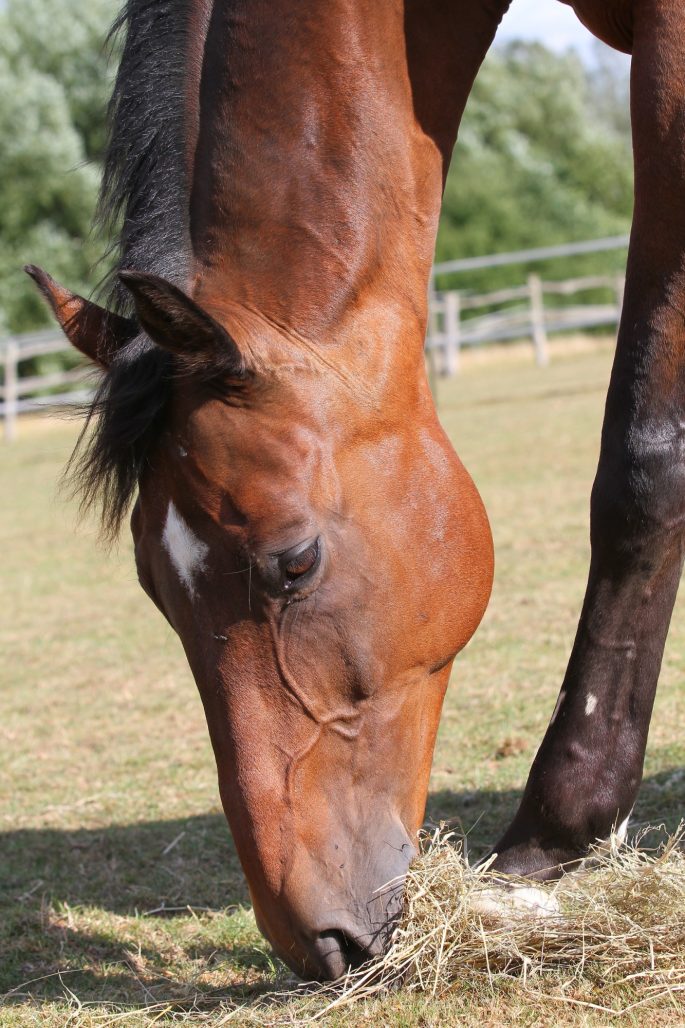Choosing The Best Type Of Hay For Your Horse

Choosing the right type of hay for your horse can be tricky when faced with different types to choose from, so what is the difference between different types of hay?
Availability in the local area will primarily dictate what types of hay are available, but different grass species and when the hay was made will have also have a big influence on the nutritional quality of the hay you are choosing. For some horses, the best isn’t always the most suitable.
Regardless of the type of hay you are looking to feed, any hay fed to horses needs to be of good hygienic quality. This means that it is free from mould and excessive dust as well as smelling fresh. Visually inspecting the hay will also help you to determine the quality as any obvious weeds within the hay could indicate that the hay is not of good enough quality for horses to eat especially as some weeds can be harmful to horses.
The next step is to find a hay with an appropriate energy content for your horse. For some horses, the best isn’t always the best for them, especially if you are managing a good doer or those with metabolic issues. During the winter months when grass is sparse or turn out is restricted, most people are reliant on their hay as the primary source of forage. However, even in the summer a lot of horses will still require hay as part of the diet in order to meet recommended fibre intakes.This may be because they are travelling and competing regularly or are still required to be stabled for a portion of the day, meaning that their access to grazing is limited and hay will need to be provided.
The two most common types of hay are legume hay or grass hay. In the UK there isn’t a great deal of legume hay available. Legume hay is generally higher in protein and calcium when compared to grass hays and can contain a higher level of energy as well. For horses that are good doers and those that are out of work / retired this type of hay is likely to provide too high of an energy intake which could lead to unwanted weight gain.
Most hay in the UK will be classed as grass hay and is likely to be produced from Meadow Grass (which is a blend of grass species) or Timothy Grass, which is a single species of grass.
Meadow hay is the most common variety of hay in the UK for horses and is well suited to horses at rest, light work and moderate exercise, as well as those that need to watch their weight. Second cut Meadow Hay will have a higher lignin content and therefore will be less digestible than early cut, making it even more suitable for horses with weight or metabolic issues as it still provides important fibre in the diet but is lower in calories.
Unlike Meadow Hay which is produced from a variety if different grass species, Timothy Hay is made specifically from one type of grass. Timothy Hay is typically lower in protein and digestible energy making it a popular choice for people managing laminitic horses, however as a natural product, testing of forage is always advised before feeding it to any horse that may require a specialist diet. Timothy hay can be lower in sugar when compared to meadow hay and has a high fibre level.
If you have a horse that needs a calorie restricted diet, a late or second cut hay is best and, in some cases, soaking the hay may also be necessary to reduce the sugar and energy content of the hay. If you have a horse that is in a good level of work, or a poor doer that needs help with weight gain feeding an early cut or first hay will help to provide more energy and calories in the diet.
Need more guidance?
If you would like any advice for your horse, please feel free to contact our nutritional team on 01622 718487 or fill out our Feed Advice Form.
Feed Advice Form
Complete our online form to receive a detailed nutritional plan for your horse or pony from one of our registered nutritionists.
Quick Feed Finder
Use our quick and easy feed finder as a guide to select the right feed for your horse or pony.











